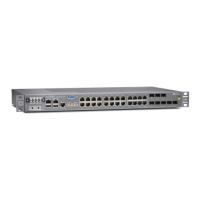Table 137: show class-of-service interface Output Fields (continued)
Field DescriptionField Name
Display the assignment of drop profiles.
• Loss priority—Packet loss priority for drop profile assignment.
• Protocol—Transport protocol for drop profile assignment.
• Index—Index of the indicated object. Objects that have indexes in this output include schedulers
and drop profiles.
• Name—Name of the drop profile.
• Type—Type of the drop profile: discrete or interpolated.
• Fill Level—Percentage fullness of a queue.
• Drop probability—Drop probability at this fill level.
Drop profiles
Display the assignment of shaping-rate adjustments on a scheduler node or queue.
• Adjusting application—Application that is performing the shaping-rate adjustment.
• The adjusting application can appear as ancp LS-0, which is the Junos OS Access Node Control
Profile process (ancpd) that performs shaping-rate adjustments on schedule nodes.
• The adjusting application can appear as DHCP, which adjusts the shaping-rate and
overhead-accounting class-of-service attributes based on DHCP option 82, suboption 9 (Vendor
Specific Information). The shaping rate is based on the actual-data-rate-downstream attribute.
The overhead accounting value is based on the access-loop-encapsulation attribute and specifies
whether the access loop uses Ethernet (frame mode) or ATM (cell mode).
• The adjusting application can also appear as pppoe, which adjusts the shaping-rate and
overhead-accounting class-of-service attributes on dynamic subscriber interfaces in a broadband
access network based on access line parameters in Point-to-Point Protocol over Ethernet
(PPPoE) Tags [TR-101]. This feature is supported on MPC/MIC interfaces on MX Series routers.
The shaping rate is based on the actual-data-rate-downstream attribute. The overhead
accounting value is based on the access-loop-encapsulation attribute and specifies whether
the access loop uses Ethernet (frame mode) or ATM (cell mode).
• Adjustment type—Type of adjustment: absolute or delta.
• Configured shaping rate—Shaping rate configured for the scheduler node or queue.
• Adjustment value—Value of adjusted shaping rate.
• Adjustment target—Level of shaping-rate adjustment performed: node or queue.
• Adjustment overhead-accounting mode—Configured shaping mode: frame or cell.
• Adjustment overhead bytes—Number of bytes that the ANCP agent adds to or subtracts from the
actual downstream frame overhead before reporting the adjusted values to CoS.
• Adjustment target—Level of shaping-rate adjustment performed: node or queue.
• Adjustment multicast index—
Adjustmentinformation
Sample Output
show class-of-service interface (Physical)
user@host> show class-of-service interface so-0/2/3
Physical interface: so-0/2/3, Index: 135
Maximum usable queues: 8, Queues in use: 4
Total non—default queues created: 4
Scheduler map: <default>, Index: 2032638653
Logical interface: fe-0/0/1.0, Index: 68, Dedicated Queues: no
2433Copyright © 2017, Juniper Networks, Inc.
Chapter 42: Operational Commands

